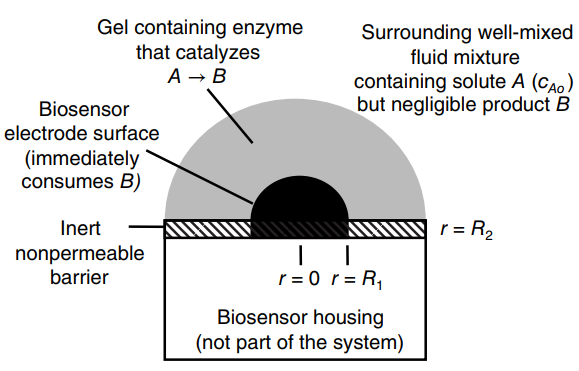A biosensor is a device that uses a biological mechanism to aid in the detection of a
Question:
a. Develop the integrated algebraic models for cA(r), NA(r) and cB(r), NB(r). As part of this analysis, state all assumptions, show development of the differential equations for mass transfer, and state boundary conditions.
b. Plot out the fluxes NB at r = R1 and r = R2 for various values of zero-order rate constant k (you pick the range for k), using the given values of DA-gel = DB-gel = 1.0 · 10-6 cm2/s, R1 = 0.2 cm, R2 = 0.5 cm. Perform the calculations on a spreadsheet.
Fantastic news! We've Found the answer you've been seeking!
Step by Step Answer:
Related Book For 

Fundamentals Of Momentum Heat And Mass Transfer
ISBN: 9781118947463
6th Edition
Authors: James Welty, Gregory L. Rorrer, David G. Foster
Question Posted:





